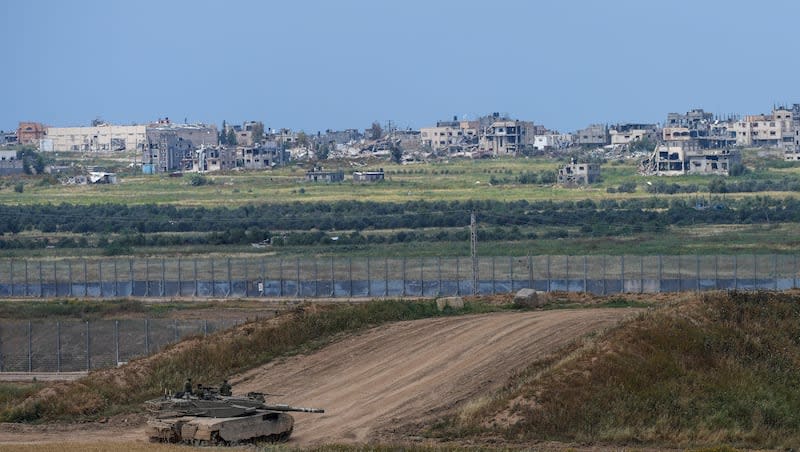Israeli military pulled troops from southern Gaza

On Sunday, Israel said it had withdrawn more soldiers from southern Gaza, leaving just one brigade behind. Israel and Hamas sent teams to Egypt for fresh talks on a potential ceasefire in the six-month conflict.
The Israel Defense Forces said in a statement that its 98th commando division, which consists of special ground forces, had “concluded its mission” in the city of Khan Younis, the largest in southern Gaza, and left “to recuperate and prepare for future operations.” The Nahal brigade, made up of ground troops stationed along a corridor that divides northern and southern Gaza, would continue to operate, per The Washington Post.
Khan Younis was home to roughly 400,000 people. It served as an economic center for southern Gaza and had a rich cultural history. As the IDF withdrew, some Palestinians began to return. After months of war, the place they found was not the one they left.
“Even the streets are no longer there,” said one Palestinian to The Washington Post. Another told The Associated Press, “It’s all just rubble. Animals can’t live here, so how is a human supposed to?” Nasser Hospital, the main medical site in the city, was still standing, but sustained significant damage.
Thousands of buildings have been destroyed or damaged, streets have been bulldozed down to the dirt, surrounded by landscapes of rubble and debris that were once blocks of apartments and businesses. On other blocks, buildings still stood but were gutted shells, scorched and full of holes, with partially shattered upper floors dangling off precipitously, reports the AP.
According to AP reports, Israel said Khan Younis was a “major Hamas stronghold” and that its operations there killed thousands of militants and inflicted heavy damage to a vast network of tunnels used by Hamas to move weapons and fighters. Israel also claimed to have found evidence that hostages were held in the city. Some 130 Israeli hostages are still in Gaza, although Israel says that one-quarter of them are dead.
Even though Israel has withdrawn troops from Khan Younis, “The war in Gaza continues, and we are far from stopping,” said the military chief, Lt. Gen. Herzi Halevi. Israeli defense officials said troops were merely regrouping as the army prepares to move into Hamas’ last stronghold, Rafah.
On a tour of the IDF’s Southern Command with U.S. ambassador Jack Lew, Israeli Defense Minister Yoav Gallant said soldiers would now be preparing for the “mission in the Rafah area” along the Egyptian border, home to some 1.5 million displaced Palestinians — more than half of Gaza’s population. Rafah has swelled in size in recent weeks as hundreds of thousands of displaced Palestinians have crowded into the town.
Israeli Prime Minister Benjamin Netanyahu escalated his pledge to take the offensive to Rafah, declaring in a video statement Monday, “It will happen. There is a date.”
U.N. officials warn that an attack on Rafah could be catastrophic, with more than 600,000 children in the path of an assault. Israel’s top ally, the United States, has said invading Rafah would be a mistake and has demanded to see a credible plan to protect civilians. Israel is purchasing 40,000 tents to prepare for the evacuation of Rafah, an Israeli official said, but no details were released about where those tents might be put.
The war has killed more than 33,000 Palestinians, two-thirds of whom are women and children, according to local health authorities. Israel says it has killed 13,000 Hamas fighters since the start of the war, according to the BBC.
On Oct. 7, more than 1,200 Israelis and foreigners were killed and hundreds were taken hostage. An additional 267 Israeli soldiers have been killed since Oct. 7.

